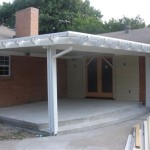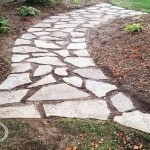Essential Aspects of Patio Tiles Interlocking
Transforming your outdoor space with interlocking patio tiles is an excellent way to enhance the aesthetics, functionality, and durability of your patio. However, there are several essential aspects to consider to ensure a successful and long-lasting installation. This article explores the key factors and best practices for interlocking patio tiles, providing valuable insights to help you achieve a beautiful and functional patio.
Tile Material
Choosing the right tile material is crucial for the longevity and suitability of your patio. Concrete, ceramic, stone, and porcelain are popular options, each offering different characteristics:
- Concrete: Durable, cost-effective, and easy to maintain.
- Ceramic: Glazed or unglazed, offering vibrant colors and patterns.
- Stone: Natural and durable, available in various textures and finishes.
- Porcelain: Durable and frost-resistant, ideal for colder climates.
Interlocking Method
Interlocking patio tiles come in various interlocking methods, including:
- Butt-Joint: Tiles fit against each other without spacers, creating a tight and seamless surface.
- Spacers: Spacers are used between tiles to create small gaps, improving drainage and preventing cracking.
- Lip Interlock: Tiles have lips or ridges that interlock, providing extra stability and load-bearing capacity.
Drainage
Adequate drainage is vital for the longevity of your patio. Water should be able to drain freely through the tile joints or via a permeable base material. A proper drainage system prevents water accumulation, reduces the risk of cracking, and ensures the tiles remain stable.
Leveling and Compaction
Before installing patio tiles, it is essential to establish a level and compacted base. This can involve excavating the area, laying down a gravel or sand base, and compacting it thoroughly. A level base ensures the tiles are installed at the same height and prevents uneven settling.
Edging and Containment
Edging is crucial for containing the tiles and preventing them from shifting or spreading. Edging materials include concrete, plastic, or metal. It should be installed around the perimeter of the patio, ensuring the tiles are securely held in place.
Conclusion
By understanding and considering these essential aspects, you can ensure a successful and beautiful interlocking patio tiles installation. Choosing the right tile material, interlocking method, and drainage system will ensure durability, while proper leveling, compaction, edging, and containment will enhance the functionality and stability of your patio. With proper care and maintenance, your interlocking patio tiles will provide years of enjoyment and enhance the beauty and value of your outdoor space.

Outdoor Flooring Over Grass Or Dirt Interlocking Tiles

Patio Tiles Interlocking Deck Outdoor Water Resistant Flooring

Wood Plastic Deck Tiles Brown Wpc Interlocking Tile 13x13 Inch For Exterior And Interiors

Kayra Decor Kd Agt02 Wooden Deck Tiles Water Resistant With Interlocking Indoor Outdoor For Balcony Garden And Roof 12 X Inches Pack Of 1 Full Polished Wood In

Interlocking Ipe Wood Deck Tiles From Arrak Quick And Easy To Install

Interlocking Deck Tiles Porch Flooring Outdoor Terrace Garden Design

How To Install Patio Deck Tiles Installing Interlocking

Btmway 1 Ft X Square Interlocking Acacia Wood Quick Patio Deck Tile Outdoor Checker Pattern Flooring 10 Per Box Cxxbn Gi33346w685 Tile01 The Home Depot

Buy Sharpex Pebble Stone Interlocking And Water Resistant Deck Tiles Indoor Outdoor 12 Inch At Best S In Jiomart

Grip Deck Tiles Hardwood Interlocking For Flooring Patio Balcony Roof Garden Composite Decking








